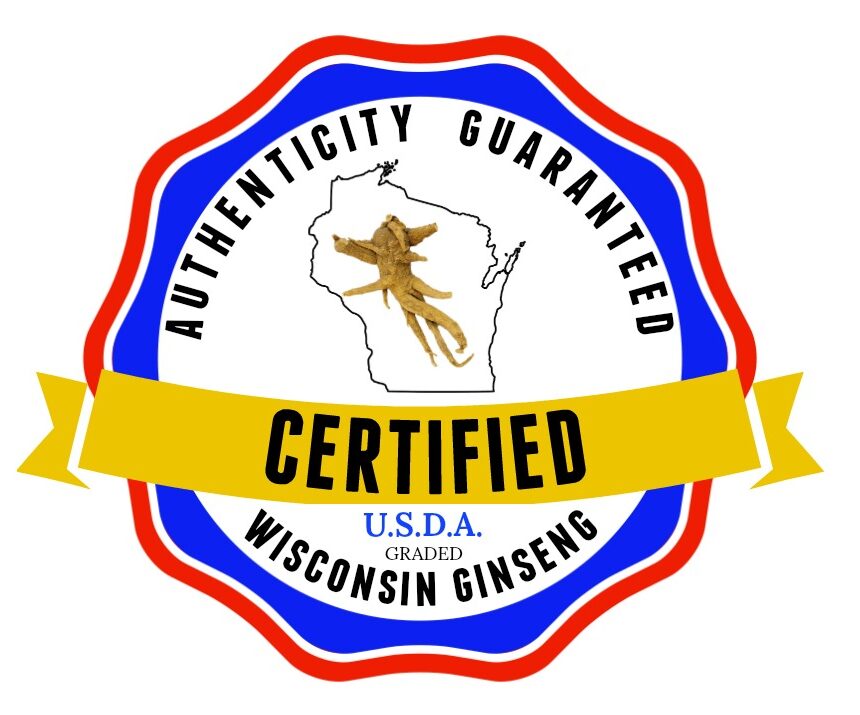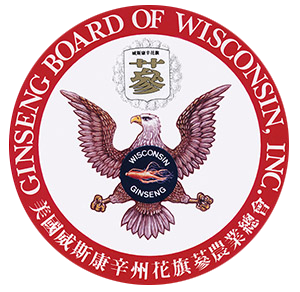Growing Wisconsin Ginseng
Wisconsin ginseng (Panax Quinquefolius) is one of the most sought-after types of American ginseng, particularly in Asian markets, due to its high potency and superior quality. Growing and harvesting it is a long-term commitment, but it can be highly rewarding. Here’s a deeper dive into the process:
1. Choosing the Right Location
- Wisconsin’s cool climate and mineral-rich, well-drained soil make it ideal for ginseng.
- It thrives in shaded environments, mimicking its natural habitat in hardwood forests.
- Many farmers use artificial shade structures (like wood-lath or polypropylene shade cloth) to regulate sunlight exposure.
- Farmers must avoid areas with a history of ginseng cultivation. Ginseng will not successfully grow on land that was already used for Ginseng, unlike other crops.
- Well drained, sandy loam soil with good air circulation is ideal.
2. Planting Ginseng Seeds
- Seeds are stratified (kept in damp, cool conditions for a year) before planting. This helps with sprouting.
- Planting is usually done in the fall (September – November), ensuring they germinate the following spring.
- Rows are often spaced about 8-12 inches apart, to allow proper air circulation, reducing the risk of disease. Seeds are often sown 1-2 inches deep.
3. Caring for Ginseng Plants
- Ginseng requires consistent moisture but well-drained soil to prevent root rot. Overwatering can lead to fungal disease.
- Farmers must monitor for pests and diseases, like root rot and Alternaria blight.
- Mulching helps regulate temperature, retain moisture, and prevent weed growth.
Harvesting Wisconsin Ginseng
Wisconsin ginseng is a high-value crop that requires careful harvesting to maximize quality and market price.
1. Timing the Harvest
- Ginseng takes at least three years to mature, but four to five years is ideal for higher potency and market value.
- It is ready when the plants turn yellow and begin to die back in the fall (usually September-October).
2. Digging the Roots
- The soil is loosened with mechanical diggers (similar to potato harvesters) or by hand using spading forks. Roots are gently pulled out of the soil and shaken free of excess dirt.
- Roots must be handled carefully to avoid breakage, as whole roots are more valuable.
Preparing Wisconsin Ginseng for the Market
Since it takes 3-5 years to mature, proper techniques ensure minimal root damage and optimal drying for sale.
1. Refrigeration of Wisconsin Ginseng Roots
- After harvesting, farmers will typically refrigerate their roots for about 2 weeks.
- Refrigeration is primarily used for short-term storage of fresh ginseng roots before drying or selling.
- Proper drying enhances the flavor, potency, and shelf life of the root.
2. Cleaning and Drying
- The roots are gently rinsed with water, but scrubbing is avoided to preserve the natural outer layer.
- Historically slow drying has been done in temperature-controlled conventional drying sheds (90-100°F) with low humidity for 1-2 weeks to prevent mold and maintain potency. Many farmers are now using upgraded kilns for this.
- Proper drying enhances the flavor, potency, and shelf life of the root.
- Dried roots develop a wrinkled, golden-brown appearance and are then graded based on size and quality.=
- Properly dried roots should be firm and snap when broken.



